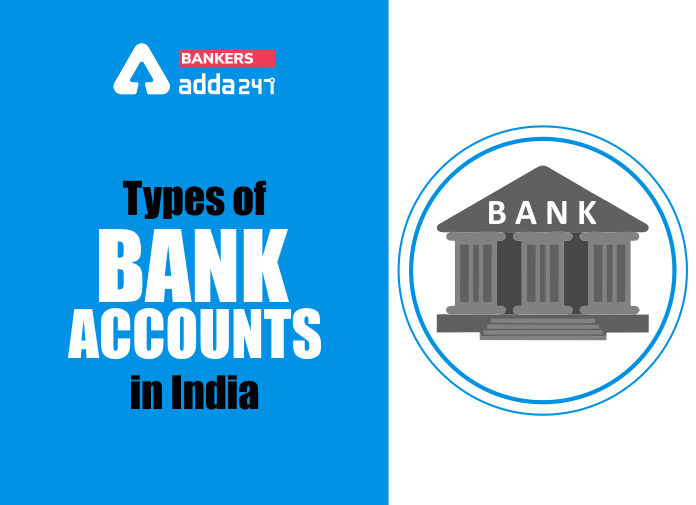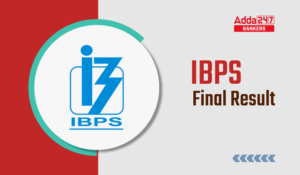Table of Contents
Banking institutions provide different different types of bank accounts in India according to the needs of the customer. These accounts have different interest rates, minimum deposits, and other criteria, which make them dissimilar to every kind of account that is available in a bank. The different types of bank accounts are Demand Deposits that includes saving and current accounts, term deposit that includes FD, RD and Non-Resident Deposits that includes Foreign currency Non-Resident, Non-Resident External Rupee Account, Non-Resident Ordinary Rupee Account. You can find more information about them if you approach any branch of the bank you hold an account. The changes made in interest rates or other features in the account will be notified to the account holder. Different charges may be levied on each account type.
Different types of Bank Accounts in India
Demand Deposits
- Saving Account
- Current Account
Term Deposits
- Fixed Deposit
- Recurring Deposit
Non-Resident Deposits
- Foreign currency Non-Resident
- Non-Resident External Rupee Account
- Non-Resident Ordinary Rupee Account
| Banking Awareness For All Bank Exams | Banking History and all the first in Banking | RBI structure and Function | Types of Bank Cards |
The above categorization depends on the following key parameters-
- Accessibility of the account
- Liquidity
- The amount of interest on the funds deposited
- Depending on the profiles of the depositors
Demand Deposit Account
The demand deposit accounts consist of two kinds of savings and the current accounts. As the name suggests, it allows for easy accessibility, but you will have to bear with low-interest rates. Whenever you want to withdraw money, you will not have to give advanced notice or face a penalty to do so.
-
Savings Account
In the savings account, you will have a low minimum balance compared to other accounts. There is no cap on the upper limit of depositing in the savings account. This account is useful for lower-income groups as there isn’t a limitation of the age, income, and the profile of the customer to have a basic savings account. The savings accounts with the small scheme require a profile of people who prefer to open in banks but have to cater to certain requirements of self-attested documents. It has an upper limit cap of one lakh in a year. The deposit cannot be higher than 50,000/- and can have an account open for a year, and permission for extension should be sought. The normal savings bank account is for the salaried persons. They would have to have a minimum balance, which usually varies from bank to bank.
| What Are NBFC And Their Functions | Difference Between Banking and Non-Banking Financial Companies (NBFCs) | Different Types of Banking | List of Public Sector Banks in India |
Facilities in Savings Account in India
| Nomination facility | Yes |
| Passbook facility | Yes |
| Chequebook facility | Yes |
| Issuance of Debit Card | Yes |
| Internet Banking | Yes |
| Mobile Banking | Yes |
| Fund Transfer | Yes |
| DD Pay Orders | Yes |
Savings Account Interest Rates
Different banks offer various types of savings account with different interest rates and minimum balance limit. The following is a brief compaision of the ineterst offered by different banks in India, you must read the information on your bank’s website carefully for complete idea.
| List of Savings Account Banks | Minimum Balance required (₹) | Savings Account Interest Rate (p.a.) |
|---|---|---|
| Allahabad Bank | 1000 | 3.50% |
| Andhra Bank | 0/5//100/1000 | 3.00% |
| AU Finance | 5000 | Up to 6.40% |
| Axis Bank | 0/10000/25000/100000/ | 3.25% – 5.25% |
| Bank of Baroda | 0/5/1000 | 3.00% – 3.25% |
| Bank of India | 500/5000/10000/20000/100000 | 3.25% – 3.50% |
| Bandhan Bank | 0/2000/5000/25000/100000 | 4.00% – 7.15% |
| Bank of Maharashtra | 1000 | 3.25% – 3.50% |
| Canara Bank | 500/1000 | 3.25% – 3.75% |
| Central Bank of India | 50 | 3.00% – 3.25% |
| Citibank | 200000/ | 3.25% |
| Corporation Bank | 0/250/500/2500/15000/100000 | 3.00% |
| Dena Bank | 0 | 3.00% – 3.25% |
| Dhanlaxmi Bank | 0/5/1000/5000/10000/25000 | 3.50% |
| DBS Bank (Digibank) | 0 | 4.00% – 7.00% |
| Federal Bank | 0 | 2.25% – 3.65% |
| HDFC Bank | 2500/5000/10000/25000 | 3.50% – 4.42% |
| HSBC Bank | 3.50% | |
| ICICI Bank | 0/1000/2000/2500/5000/10000 | 3.25% – 3.75% |
| IDBI Bank | 500/2500/5000 | 3.50% – 4.00% |
| IDFC Bank | 25000 | Upto 7.00% |
| India Post Payments Bank | 0 | 3.00% |
| Indian Bank | 250/500/1000 | 3.50% |
| Indian Overseas Bank | 500/1000 | 3.50% – 3.75% |
| IndusInd Bank | 0/10000/25000/2500000 | 4.00% – 6.00% |
| Jammu and Kashmir Bank | 0/500/1000 | 3.25% |
| Jana Small Finance Bank | 2500 | 5.00% – 8.00% |
| Karnataka Bank | 0/500/1000/2000 | 3.00% – 5.00% |
| Kotak Bank | 0/2000/3000/5000/10000/20000 | 4.00% – 5.00% |
| Lakshmi Vilas Bank | 1000/3000/5000 | 3.50% – 6.50% |
| Oriental Bank of Commerce | 0/500/1000 | 3.25% – 3.80% |
| Punjab National Bank | 500/1000/2000/50000 | 3.25% – 3.80% |
| Punjab & Sind Bank | 500/1000 | 3.50% – 4.00% |
| RBL Bank | 5000 | 5.00% – 6.75% |
| South Indian Bank | 0/2500/5000 | 2.50% – 5.30% |
| State Bank of India (SBI) | 0 | 2.75% |
| Syndicate Bank | 0/100/500/1000 | 3.25% – 3.75% |
| UCO Bank | 0/100/250/500/1000/1500 | 2.50% – 3.00% |
| Union Bank of India | 0/20/100/250/500/1000 | 3.00% |
| United Bank of India | 0/50/100/500 | 3.50% – 3.75% |
| Utkarsh Small Finance Bank | 5000/10000 | 7.00% – 7.75% |
| Vijaya Bank | 500/1000/2000 | 3.00% – 3.25% |
| YES Bank | 0 | 5.00% – 6.25% |
-
Current Account
The current account will enable frequent transactions, especially for those who are into commercial activities. The account holder can avail of any number of transactions per day, an overdraft facility with a cap on an agreed amount. Definitely flexible in the liquidity options that are provided by this account than any other. The current account has a higher limited balance than a savings account. Current Account is a no-interest-bearing deposit account with minimum balance requirements and a stipulated monthly average balance.
Term Deposit Account
The term deposits are for a fixed term, which can be extended at the request of the depositor. They are varying time limits for term deposits from a week to even ten years; accordingly, the interest rates also vary. The depositor can avail of the deposit after the set period with the agreed amount of interest. The recurring deposit will consist of initially taking a fixed amount of deposit and, consequently, fixed installments at regular intervals of time. The period of deposit may vary from six months to even ten years.
The Reserve Bank of Inida announced a repo rate cut of 75 bps due to the impact of coronavirus pandemic on the economy, due to which many banks have reduced the interest rate offered with fixed deposites.
Fixed Deposit (FD) Interest Rates Comparison
| Bank | FD Rate of Interest | Senior Citizen FD Rates |
|---|---|---|
| SBI Fixed Deposit | 3.30% – 5.70% | 3.80% – 6.50% |
| HDFC Bank Fixed Deposit | 3.00% – 5.75% | 3.50% – 6.25% |
| ICICI Bank Fixed Deposit | 3.25% – 5.75% | 3.75% – 6.25% |
| Axis Bank | 3.50% – 6.10% | 3.50% – 6.75% |
| Kotak Bank | 3.00% – 5.60% | 3.50% – 6.10% |
| IDFC First Bank | 4.00% – 7.25% | 4.50% – 7.75% |
| Bank of Baroda | 3.30% – 5.70% | 3.80% – 6.20% |
| Citibank | 2.75% – 4.00% | 3.25% – 4.50% |
| IDBI Bank | 3.10% – 5.90% | 3.60% – 6.40% |
| Indian Bank | 3.75% – 5.75% | 4.25% – 6.25% |
| Indian Overseas Bank | 4.50% – 5.75% | 5.25% – 6.50% |
| OBC | 3.50% – 5.75% | 4.00% – 6.25% |
| PNB | 3.50% – 5.75% | 4.00% – 6.25% |
| HDFC | 7.30% – 7.30% | 7.55% – 7.55% |
| PNB Housing Finance | 7.20% – 7.75% | 7.45% – 8.00% |
| Allahabad Bank | 3.75% – 5.75% | 4.25% – 6.25% |
| Andhra Bank | 4.00% – 5.90% | 4.50% – 6.40% |
| Bank of India | 4.00% – 5.90% | 4.50% – 6.40% |
| Bank of Maharashtra | 3.50% – 5.60% | 3.50% – 6.10% |
| Canara Bank | 4.00% – 5.75% | 4.00% – 6.25% |
| Central Bank of India | 3.70% – 5.65% | 4.20% – 6.15% |
| Punjab and Sind Bank | 4.00% – 5.85% | 4.50% – 6.35% |
| UCO Bank | 3.90% – 5.75% | 4.15% – 6.25% |
| Union Bank of India | 4.00% – 5.90% | 4.50% – 6.40% |
| United Bank of India | 3.50% – 5.75% | 4.00% – 6.25% |
| Lakshmi Vilas Bank | 4.00% – 7.25% | 4.00% – 7.25% |
| Equitas Small Finance Bank | 4.00% – 8.00% | 4.60% – 8.60% |
| Jana Small Finance Bank | 5.00% – 8.00% | 5.50% – 8.50% |
| Karnataka Bank | 3.50% – 5.90% | 4.00% – 6.40% |
| DBS Bank | 4.00% – 5.70% | 4.00% – 5.70% |
| DHFL | 8.50% – 9.25% | 9.00% – 9.75% |
| Jammu And Kashmir Bank | 3.50% – 5.70% | 4.00% – 6.20% |
| Ujjivan Small Finance Bank | 4.50% – 7.50% | 5.00% – 8.00% |
| Fincare Small Finance Bank | 4.00% – 9.00% | 4.50% – 9.50% |
| Karur Vysya Bank | 4.15% – 6.05% | 4.15% – 6.55% |
| Syndicate Bank | 4.00% – 6.30% | 4.00% – 6.80% |
| Yes Bank | 5.00% – 7.25% | 5.50% – 7.75% |
| Dhan Laxmi Bank | 3.50% – 6.40% | 4.00% – 6.90% |
| Bajaj Finance | 7.40% – 7.60% | 7.65% – 7.85% |
| Standard Chartered Bank | 4.25% – 6.50% | 4.25% – 6.50% |
| Federal Bank | 3.50% – 6.25% | 4.00% – 6.75% |
| AU Small Finance Bank | 5.00% – 7.53% | 5.50% – 8.03% |
| LIC Housing Finance | 7.50% – 7.60% | 7.75% – 7.85% |
| Corporation Bank | 4.00% – 5.90% | 4.50% – 6.40% |
| ESAF Small Finance Bank | 5.00% – 7.50% | 5.50% – 8.00% |
| IndusInd Bank | 4.00% – 7.00% | 4.50% – 7.50% |
| RBL Bank | 5.00% – 7.50% | 5.50% – 8.00% |
| DCB Bank | 5.00% – 7.35% | 5.50% – 7.85% |
| HSBC Bank | 2.50% – 4.25% | 3.00% – 4.75% |
| South Indian Bank | 4.00% – 6.30% | 4.50% – 6.80% |
| Bandhan Bank | 3.25% – 6.50% | 4.00% – 7.25% |
Non-Resident Deposits
There are non-resident deposits for the non-resident Indians as the name suggests it is from the expatriates who want to deposit their savings in the Indian banks while residing outside the country. There are three kinds of NRI accounts, one of which allows you to keep the deposits in foreign currency, but these funds are to be held in term deposits. They are fully repatriable with the principle and interest earned on it. The other one you can convert the foreign currency into Indian rupee and be saved under term or demand deposit accounts, both these accounts are non-taxable in India. The NRO account allows both term and saving deposit accounts, but they are taxable in India. Here the principal amount is non-repatriable, but only the interest will be availed.
The other accounts in banks are
- The DEMAT account is for the transaction of shares in the electronic format
- The Nostro account allows the Indian banks to hold an account of the foreign banks wherein the deposits are made in foreign currency
- The Loro account allows for two banks transacting with the third bank
- The Vostro account is maintained in Indian banks in Indian currency by the foreign banks
- The Escrow Account is a transaction that takes place between two parties but needs a third party account for the deal to pass through temporarily.
- The GILT account are special accounts wherein government securities and treasury bills are held in the DEMAT form and are maintained and held by the investors as well as the primary dealers
The above details give you a broad idea of the kind of accounts held by Indian banks.
Click Here to Register for Bank Exams 2020 Preparation Material
Join Live Batches to Prepare for Bank Exams



 IBPS Final Result 2025 Coming Out Tomorr...
IBPS Final Result 2025 Coming Out Tomorr...
 Simple Tips to Avoid Common Mistakes In ...
Simple Tips to Avoid Common Mistakes In ...
 Important Topics & Shortcuts for IDB...
Important Topics & Shortcuts for IDB...




